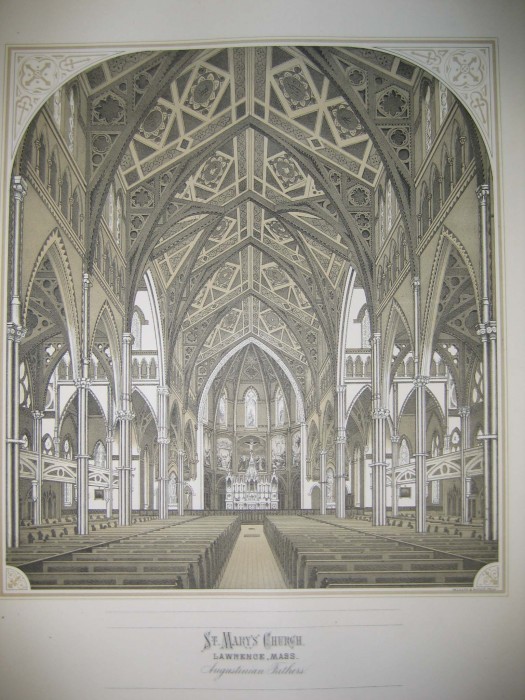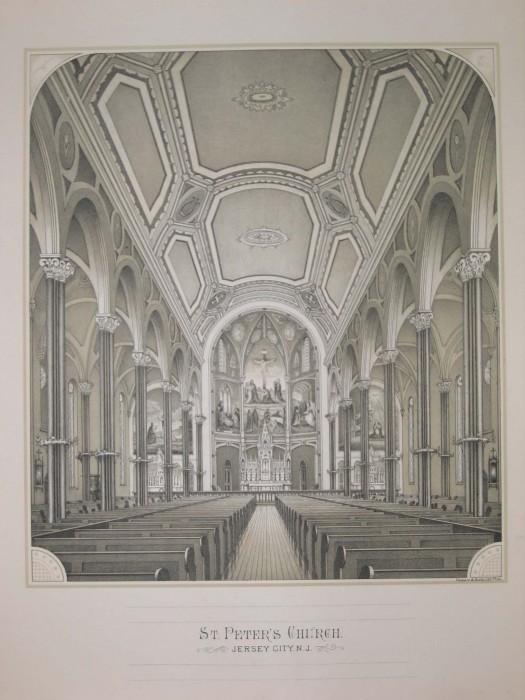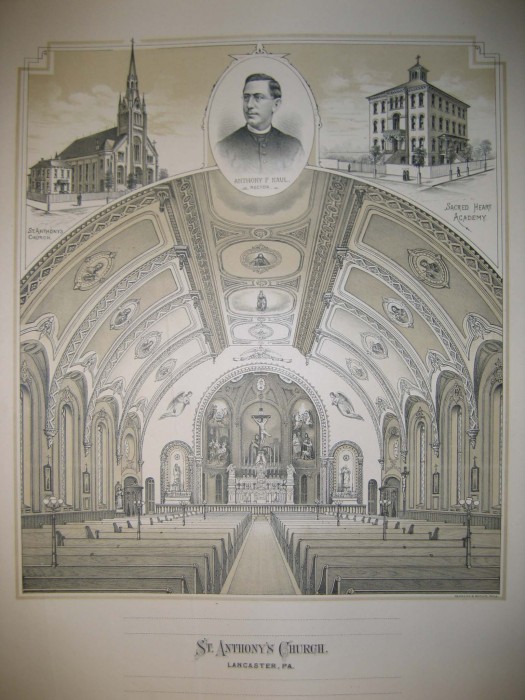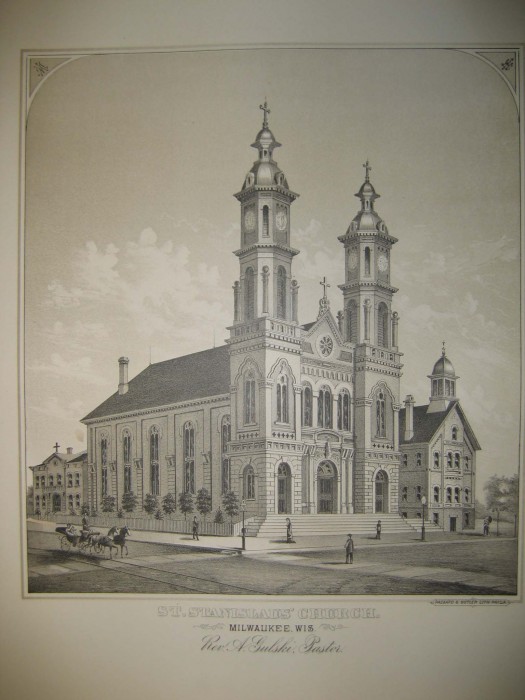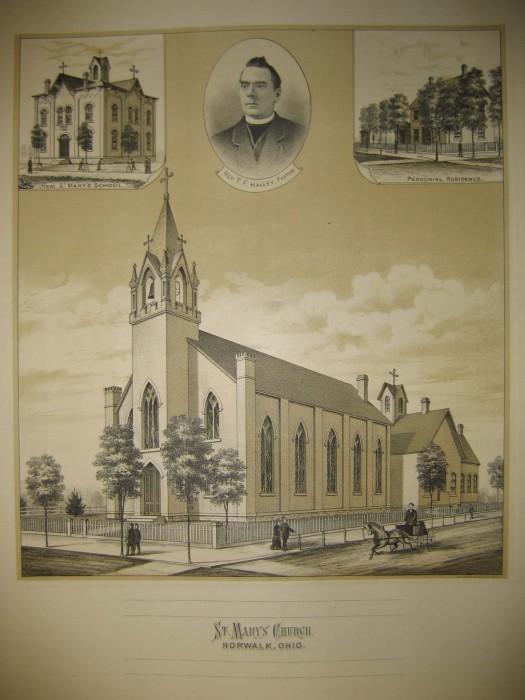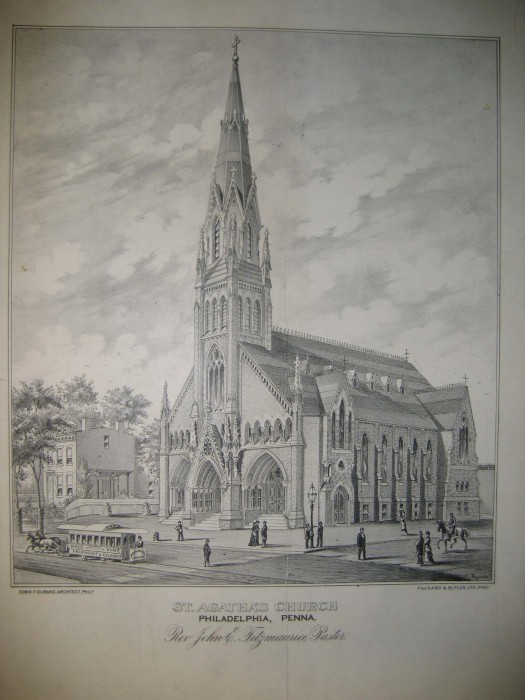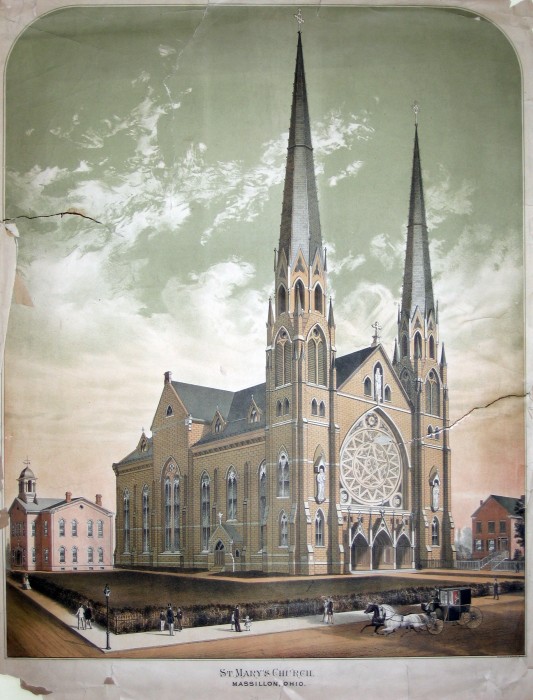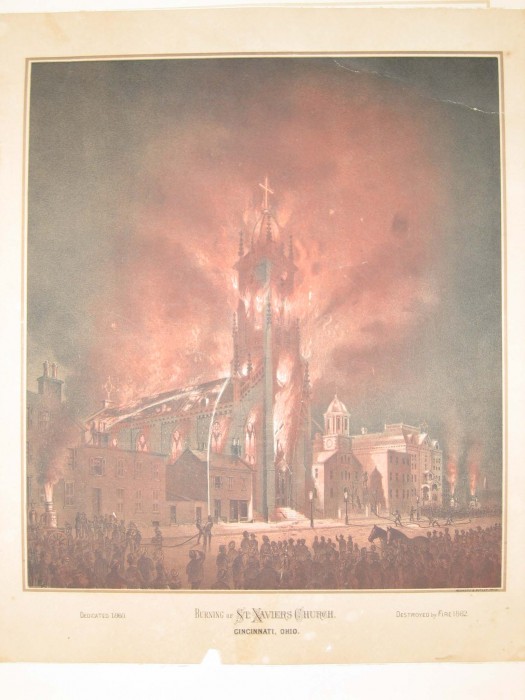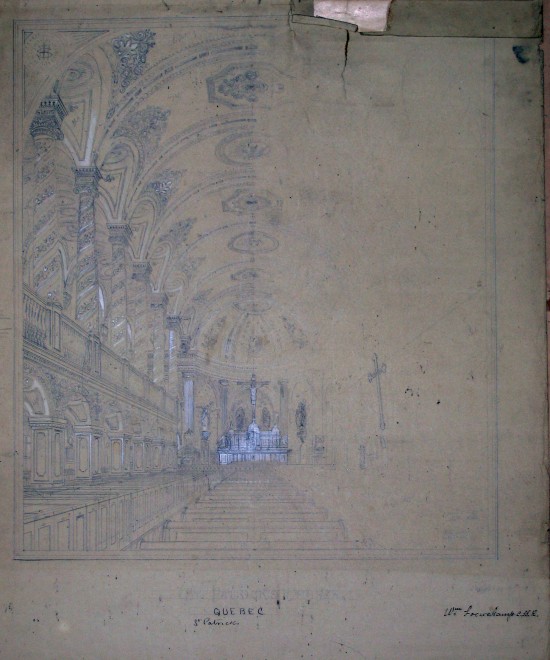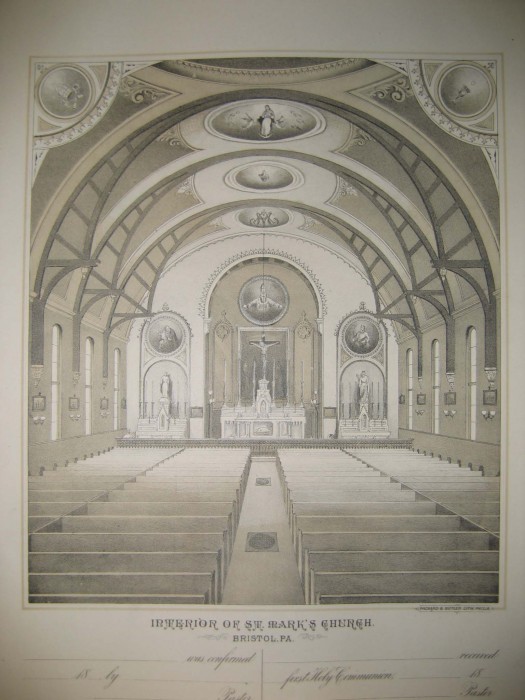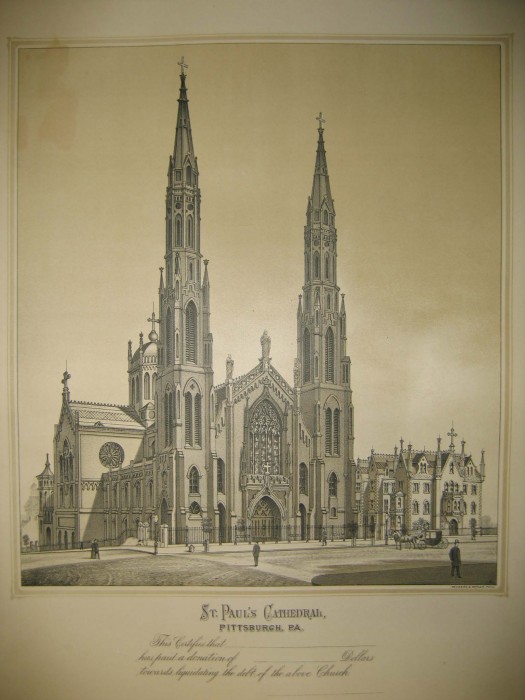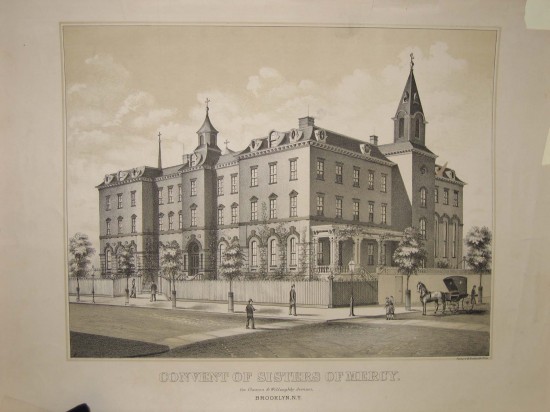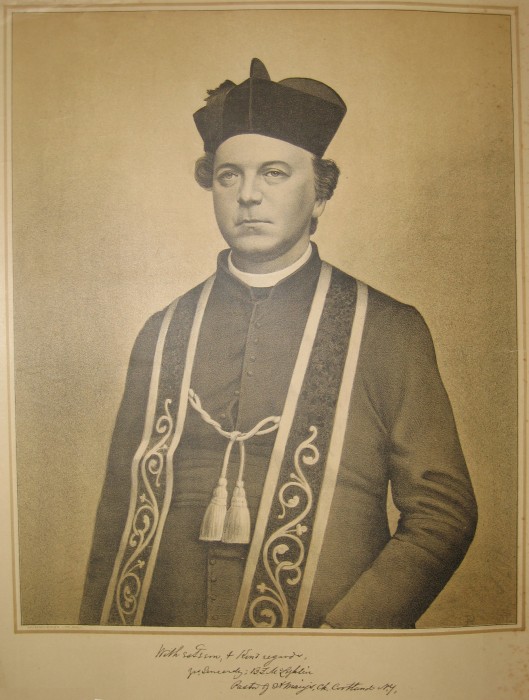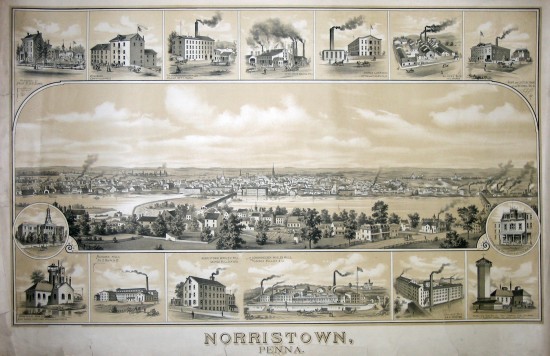Among the print collections of the PAHRC is a collection of Catholic church lithographs by the Philadelphia lithography firm of Packard and Butler (later Packard, Butler and Partridge), There are over 400 prints of interior or exterior views of Catholic churches throughout the United States and parts of Canada.
The firm of Packard and Butler was started by Herbert S. Packard and William H. Butler. Packard was an artist and lithographer from Boston where he worked for the lithography firm of Haskell and Allen. Butler was a lithographer from New York City. The firm first appears in the 1879 Philadelphia City Directory as Packard and Butler, Lithographers and was located at 716 Filbert Street. In 1883 they were joined by David Anson Partridge, a photo-lithographer originally from Vermont. The firm was re-named as Packard, Butler and Partridge. At about this time, they also relocated their business to 715 Arch Street. The church lithograph collection contains items from both firms.
On January 26, 1886, the building where the firm was located was destroyed by a fire. This appears to have ended the firm, although Packard and Partridge continued to work together until 1893.
The church lithograph collection contains images of churches from Connecticut, the District of Columbia, Delaware, Iowa, Illinois, Indiana, Kentucky, Louisiana, Massachusetts, Maryland, Maine, Mississippi, Minnesota, Missouri, New Hampshire, New Jersey, New York, Ohio, Pennsylvania, Rhode Island, Tennessee, Virginia, Wisconsin, and a few from Canada, mainly Montreal.
Almost nothing is known about why the company chose to specialize in church lithographs or how they solicited business or performed the execution of the lithographs. Packard appears to be the main artist with Butler and Partridge executing the lithographs. PAHRC has a lithograph of St. Mary's Church in Lawrence, Massachusetts that was published by Packard’s old firm of Haskell and Allen. It is signed HSP, so Packard apparently did these types of drawings in Boston. They may have been a specialty of his.
Almost all of the church lithographs are 16” x 20” and are black and white. The majority of the lithographs follow a standard format. All of the interior prints show views of the main altar from a point in the back of the church, straight down the center aisle.
Occasionally the standard format is varied by including vignettes of the pastor or the exterior of the church.
Generally, the exterior views are of the church from an angle so that the front and one of the sides are showing. The only other buildings in the view are one or more of the other parish buildings which are sometimes labeled but generally are not.
A number of the exterior views also include vignettes of the pastor or other parish buildings such as the school, rectory and convent or the former church.
The exterior views also have standard touches such as well dressed passers-by. Almost all include a horse and carriage of some sort and some of the prints from larger cities include streetcars.
Only a few prints break from this standard format. The lithograph of St. Mary’s Church in Masillon, Ohio is a larger size and in color, though it contains the Packard and Butler standard touches of a horse drawn carriage and bystanders.
A color lithograph of the burning of St. Xavier's Church in Cincinnati, Ohio also breaks from the standard format.
PAHRC also has about a dozen preliminary drawings of churches by Packard, some of which include marginal notations or the signature of the pastor approving the final drawing.
The prints seem to have been produced for a variety of uses. There are a number of prints that were used as certificates commemorating First Holy Communion and Confirmation.
Some were given as gifts for contributions to the church building fund. The remainder may have been sold simply to raise money for the church.
Catholic churches were not the only lithographs created by Packard, Butler and Partridge. The PAHRC collection includes a few lithographs of Catholic institutions:
A few portraits of priests:
And large bird’s eye views of Norristown, Pennsylvania and New Brunswick and Paterson, New Jersey. The bird's eye views include vignettes of notable businesses, institutions and residences.
There are not enough of these prints in the collection to determine how much of this type of work was created by the firm. The largest examples of remaining lithographs by the firm are of Catholic churches which appears to have comprised the majority of their work.
Biographical information on Packard and Butler and Packard, Butler and Partridge came from the Philadelphia on Stone Biographical Dictionary of Lithographers at the Library Company of Philadelphia and Philadelphia City Directories. More information can be found at: http://www.librarycompany.org/pos/posdictionary.htm


